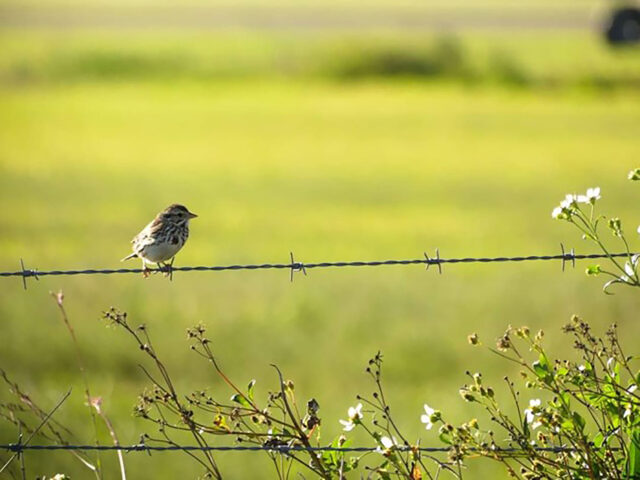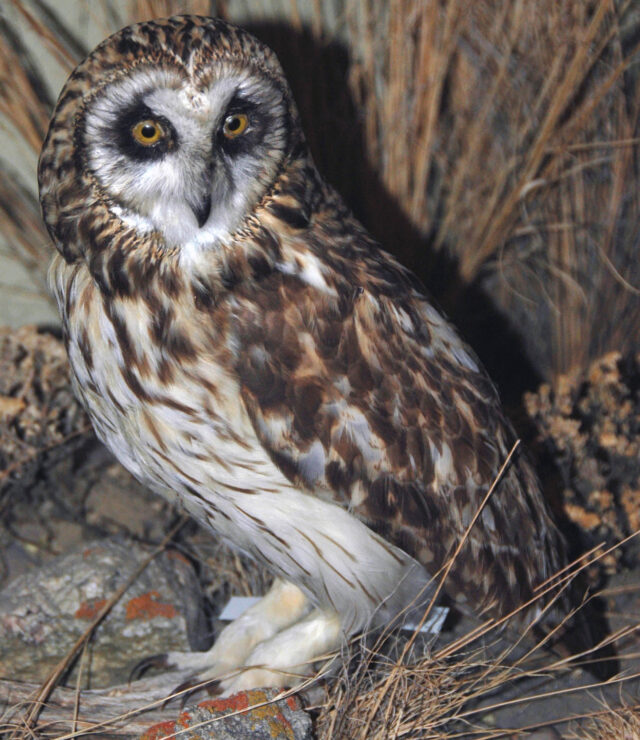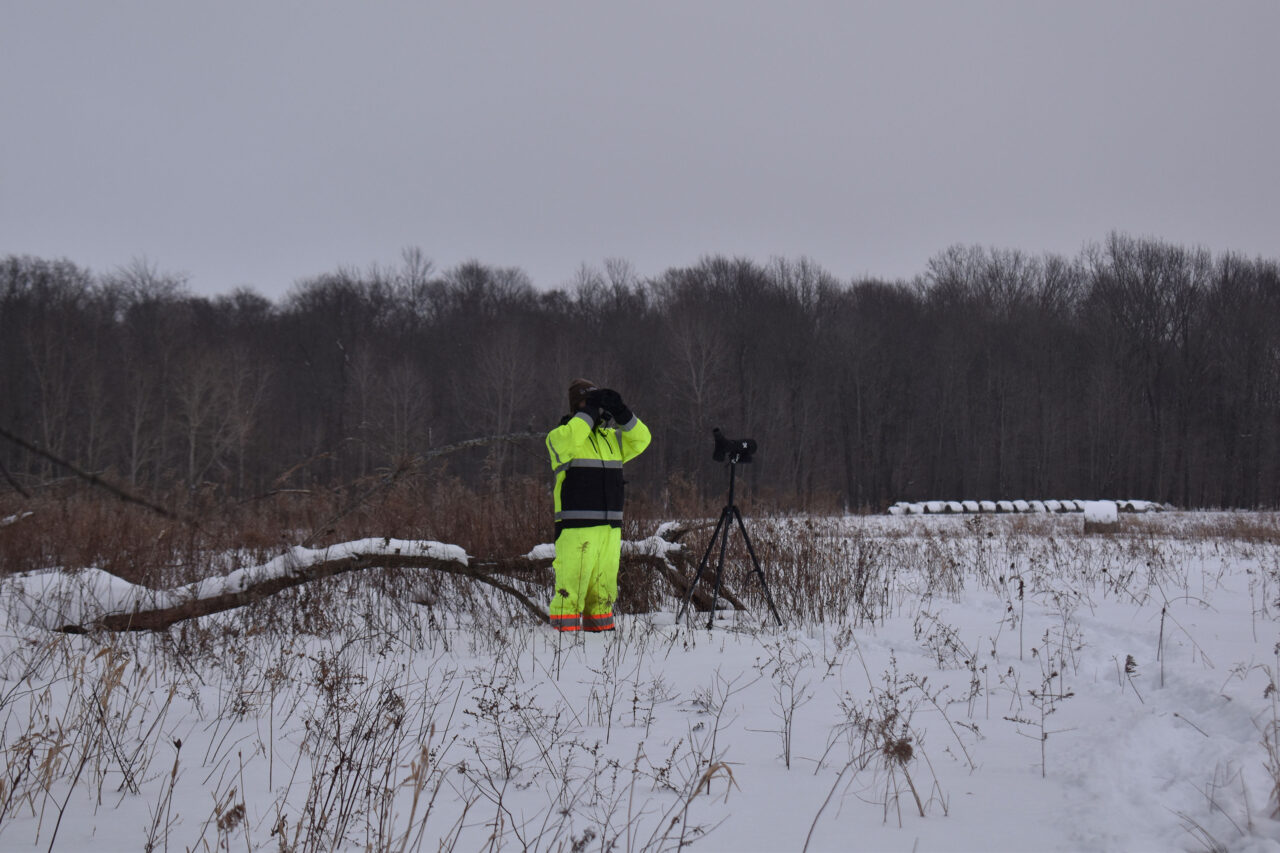Minimizing Ecological Impacts on Bird Populations on Solar Sites

In order to meet ambitious targets for the development of clean energy, renewable energy projects are developing quickly. While it’s widely recognized that the need for reduction of emissions is urgent, projects that negatively impact wildlife habitats present needless trade-offs. Our team regularly performs wildlife assessments and surveys to help these projects proceed responsibly and eliminate or mitigate adverse impacts. Monitoring protected bird species’ behavior and identifying their suitable habitats is a specialized service which LaBella provides.
Presently, bird populations are in decline nationwide. The State of the Birds 2022 indicated that the loss in abundance and diversity of birds is projected to continue in every habitat except wetlands. A 2019 research publication* by Rosenberg et al. estimates that North American bird populations have declined by three billion individuals since 1970. That means about one in four birds has disappeared in the past 50 years. Birds are an indicator species, meaning that their population dynamics can suggest if the ecosystems with which they interact are healthy.
The New York State Department of Environmental Conservation (NYSDEC) has shown particular concern over how various development projects in New York may affect State-protected bird species, including solar development’s potential threat to their habitats. With the arrival of State and Federal incentives to attract solar developers to New York in recent years, there has been a great influx of solar projects. In relation, the State legislature finalized regulations implementing Section 94-c of the Executive Law in April 2021 and created the Office of Renewable Energy Siting (ORES) to oversee the siting approval of new utility-scale renewable energy generation facilities.
Many development projects are often sited on open grasslands and agriculture fields, which are prime habitat for many protected bird species in New York State. Under Section 94-c regulations, pre-construction field surveys are required in support of a siting permit and should be conducted well in advance of application filing for utility-scale solar facilities. In addition, the NYSDEC has performed more in-depth screening of community solar, residential development, and other development sites by using unofficial online resources like the New York Breeding Bird Atlas (NYBBA) and eBird to ensure these projects are not impacting protected bird species habitat.
The NYBBA is primarily conducted by citizen scientists, or volunteers, and is updated every 20 years with five years of data. NYBBA data collection for 2020 through 2024 is currently underway. Similarly, eBird is an online database where the general public can submit their bird sightings and, after data verification and scrutiny, are documented officially into an expansive dataset.
At LaBella, we have increasingly seen New York State require two distinct field surveys to determine such impacts to protected species habitat: Wintering Raptor and Breeding Grassland Bird surveys.
 Wintering Raptor surveys specifically target two State-listed species: the short-eared owl (Asio flammeus) and the northern harrier (Circus hudsonius). A “raptor” is another term for a bird of prey (hawks, owls, eagles, and believe it or not, vultures). The short-eared owl and northern harrier are closely associated with grasslands, agricultural lands, and vast open habitat in which they hunt and breed. As it happens, these lands are generally ideal for solar facility siting. These surveys are primarily conducted using evening surveys. Biologists go to a field’s edge at least one hour before sunset and record any short-eared owl or northern harrier activity. The short-eared owl, especially, is most active during the crepuscular (twilight) time in the evening, and biologists often wait until after dark to document activity. The State requires Wintering Raptor surveys be conducted from November 15 to March 31, at a minimum, for one winter season.
Wintering Raptor surveys specifically target two State-listed species: the short-eared owl (Asio flammeus) and the northern harrier (Circus hudsonius). A “raptor” is another term for a bird of prey (hawks, owls, eagles, and believe it or not, vultures). The short-eared owl and northern harrier are closely associated with grasslands, agricultural lands, and vast open habitat in which they hunt and breed. As it happens, these lands are generally ideal for solar facility siting. These surveys are primarily conducted using evening surveys. Biologists go to a field’s edge at least one hour before sunset and record any short-eared owl or northern harrier activity. The short-eared owl, especially, is most active during the crepuscular (twilight) time in the evening, and biologists often wait until after dark to document activity. The State requires Wintering Raptor surveys be conducted from November 15 to March 31, at a minimum, for one winter season.- Breeding Grassland Bird surveys target several State-protected songbirds that are known to breed in New York. Surveys are conducted via “point count” surveys, in which a biologist records every bird species located within a 100-meter radius of several established points within suitable grassland and open habitat. This requires a deep understanding of New York bird vocalizations, plumages, and behaviors to record species accurately. The State requires Breeding Grassland Bird surveys be conducted from May 15 to July 20 during any given year.

These avian surveys first require a comprehensive work plan to be submitted to the State for their approval of proposed survey methods and final reporting. Biologists will continually visit the proposed facility site and conduct these surveys to determine whether “essential behaviors” like nesting or hunting are exhibited by State-protected bird species. If significant essential behaviors are observed, the State may require mitigation for the direct impacts to the suitable habitat occupied by State-protected bird species within the facility site.
Mitigation may take the form of in lieu fee credits, habitat creation, habitat restoration, or habitat preservation via land placed in a conservation easement in perpetuity. Developers have also successfully worked with participating landowners and farmers to simply adjust agricultural practices and haying schedules to satisfy mitigation requirements.
Our team of biologists is proficient in conducting these pre-construction field studies; the 94-c application process; Incidental Take Permits (ITPs) requiring Net Conservation Benefit Plans (NCBPs); and designing, implementing, and monitoring avian habitat mitigation sites. Because these studies are season-specific, there are several key dates that should be incorporated into any project plan. Survey work plans need to be submitted to ORES and NYSDEC at least one month prior to the beginning of fieldwork – October 15 for Wintering Raptor surveys and April 15 for Breeding Grassland Bird surveys.
As biologists, we support the development of clean energy AND the wildlife impacted by our activities. Our goal is to facilitate the completion of studies that form responsible siting strategies.
*Decline of the North American avifauna by Kenneth V. Rosenberg, et al, is available via paywall here. Alternatively, a free article about the research is available here.

About the Author
Adam PriceWetland Ecologist
Adam is a Wetland Ecologist with over seven years of experience conducting wildlife and ecological surveys across New York, Florida, and Alaska. He is responsible for a wide variety of environmental compliance and monitoring activities, including completing state and federal wetland permitting, delineating wetlands, habitat and wildlife studies, and consultation. Adam also has experience performing environmental and agricultural monitoring for large-scale utility construction projects.